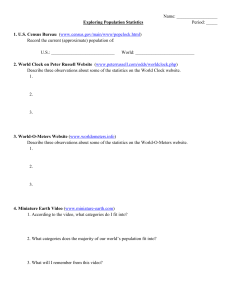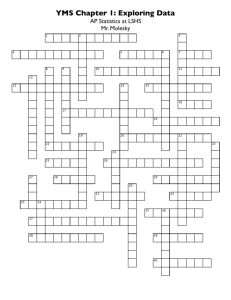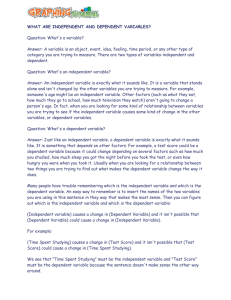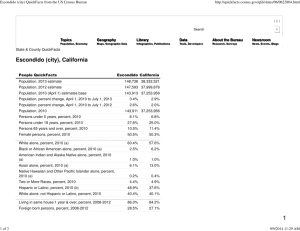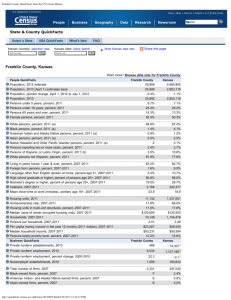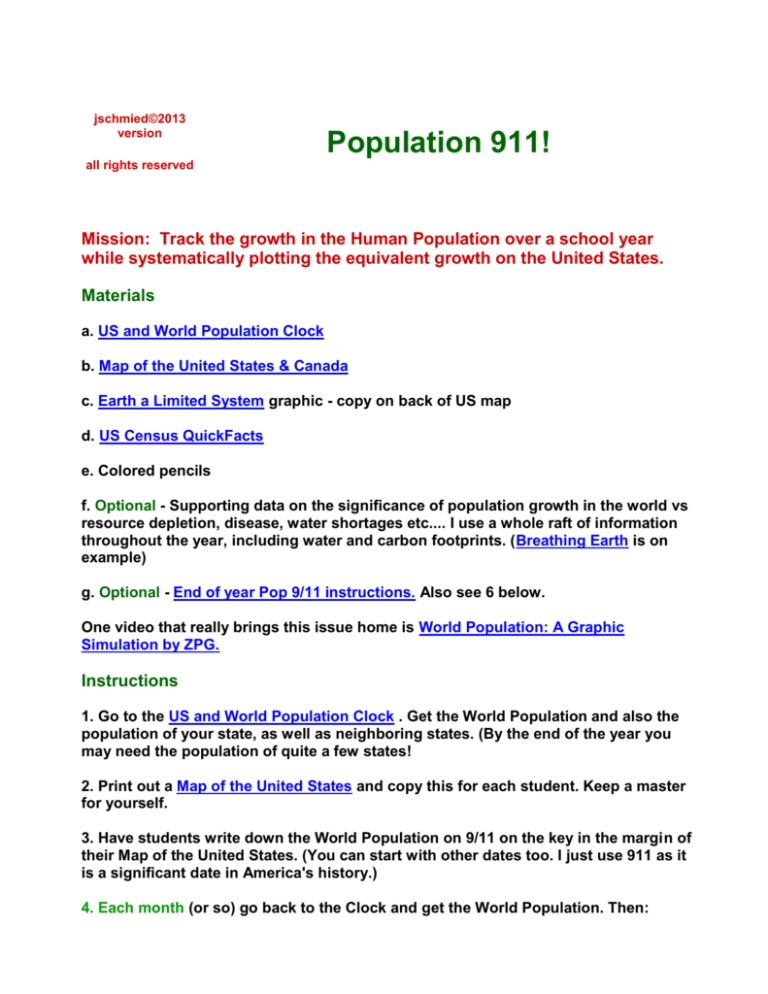
jschmied©2013
version
Population 911!
all rights reserved
Mission: Track the growth in the Human Population over a school year
while systematically plotting the equivalent growth on the United States.
Materials
a. US and World Population Clock
b. Map of the United States & Canada
c. Earth a Limited System graphic - copy on back of US map
d. US Census QuickFacts
e. Colored pencils
f. Optional - Supporting data on the significance of population growth in the world vs
resource depletion, disease, water shortages etc.... I use a whole raft of information
throughout the year, including water and carbon footprints. (Breathing Earth is on
example)
g. Optional - End of year Pop 9/11 instructions. Also see 6 below.
One video that really brings this issue home is World Population: A Graphic
Simulation by ZPG.
Instructions
1. Go to the US and World Population Clock . Get the World Population and also the
population of your state, as well as neighboring states. (By the end of the year you
may need the population of quite a few states!
2. Print out a Map of the United States and copy this for each student. Keep a master
for yourself.
3. Have students write down the World Population on 9/11 on the key in the margin of
their Map of the United States. (You can start with other dates too. I just use 911 as it
is a significant date in America's history.)
4. Each month (or so) go back to the Clock and get the World Population. Then:
a. Subtract the previous 9/11 world population from latest 9/11 world
Population to get the growth over the period.
b. Enter the date, latest population, and growth on the left side of the 9/11 map.
c. Find out the equivalent population(s) of the local state(s) from the Census
QuickFacts.
d. Now color in the equivalent population growth on the nearest states.
(depending on your state you may need to color in a couple states. As you
progress through California, or Texas, you may only color in a 1/2 or a 1/5th of
the state for that period.
e. optional: Have a short discussion about Does Population drive every
environmental issue?
5. Continue each month. You can just do this project as the bare bones and its
guaranteed that the students will bring up their own questions. For Middle school or
higher, I'd recommend blending in other pertinent environmental topics. (Over
consumption, Waste, Resource Depletion, Extinction, etc.)
6. End of year:
a. Prorate the data to fall 9/11 so the class has one year's worth of data. Note
this number (for example: 74.6 Million for the year)
b. Subtract the present world population from the whole year's value. Use this
value to color in the remaining states. This will give you a picture of one year's
world population growth on the US.
You can stop here after one year…! Or, do as I do and have the student's use the one
year total to project the world population on their maps for each succeeding year (8th,
9th etc.) until they graduate from HS. Either way, it’s an extremely powerful project.
7. Keep plotting until HS graduation. Here's a sample of my complete instructions for
end of year Population 911. In summary,
a. After plotting the data for the first year, have the students assign a color
code for each year left until they graduate. (8th grade, 9th grade etc.)
b. Next, color each year's population on the remaining states. When you run
out of states, overlay the populations for those years on Canada, Mexico, and
Central America.
c. As the project progresses your students will gain an ever growing
appreciation and understanding of the impact Earth’s growing human
population has on the world's key resources.


